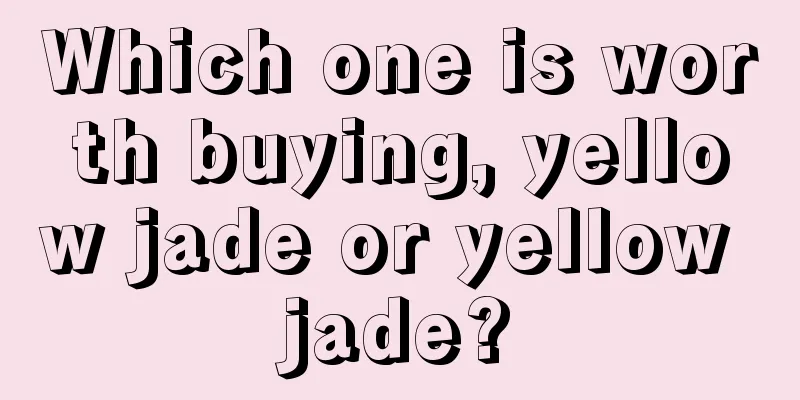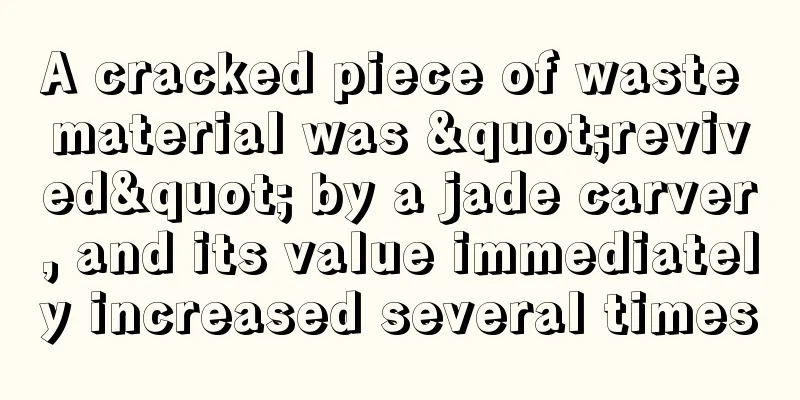Inventory of jade stones that are similar to jadeite. Don’t ever mistake these for jadeite!

|
As we all know, jadeite is a relatively valuable jade. It is precisely because jade is expensive and widely loved by the masses that some "stones" similar to jade are sold as jade on the market. Therefore, when purchasing jade, you must observe carefully to avoid purchasing jade that is similar to jade but not jade! Let’s take stock of the jades that are similar to jadeite! Garnet Garnet is most easily confused with emerald. To the naked eye, the interior of garnet appears to have a granular synthetic structure, and does not have the silky, cotton-like layered fibrous structure of jadeite. Furthermore, garnet is far less transparent than jadeite, and black spots often appear on its surface, while jadeite does not. Garnet is also more important than emerald. When citizens buy gemstones, they can bring a simple color filter. Green jadeite will still appear emerald green under the filter, while green garnet will emit a distinct red light. Green Agate Chrysoprase, also known as green agate, is a gemstone. It is a fibrous quartz containing nickel and is usually apple green in color, but can vary in shades. Chrysoprase is quite rare and has attractive colors. It is one of the most valuable quartz minerals and is easily confused with jadeite. After being processed and made into hemispherical jewelry, it can be comparable to amethyst. Malay Jade Malay jade is also known as Malaysian jade, Luzon jade, etc. It is an artificial imitation jade product. The main mineral is quartz. It is made by melting pure quartz or quartz crystals and adding colorants. Hardness 6.5~7, specific gravity 2.65, refractive index 154. It became popular in Thailand, Myanmar and the Yunnan border area of my country in 1988. At the beginning, many people were deceived, and some people lost their fortunes for Malay jade. The sales were good, and in the middle and late stages, illegal merchants began to call green quartzite, Australian jade, aventurine and green glass Malaysian jade. It can be accurately judged with the naked eye. Water foam Shuimozi is produced in Myanmar and is a gray-green stone with poor water head that is common on the Yunnan border. People call it foamy ulcer. Because of its deep color, it is made into thin slice ornaments. The main mineral component of Mozikui is nacrochrome pyroxene, followed by jadeite, diopside, chrome jadeite, blue amphibole, etc., which is actually nacrochrome pyroxene. Among them, the one with a certain transparency and jade-like feel is called nanochrome pyroxene jade. Hardness 5~6.5, specific gravity 3.14~3.17, refractive index 1.63~1.66. The above-mentioned types of jade are the ones that are most easily confused with other ingredients when purchasing jadeite, so you must keep your eyes open when purchasing jadeite, otherwise you will spend a lot of money to buy fake jadeite, which will not be worth it. fcgc66 fcpf18 |
<<: There are several ways to counterfeit jadeite raw stones. Be careful when gambling on jadeite!
>>: How much do you know about floating flowers in jadeite?
Recommend
Still not sure what gender-neutral jewelry is? You are out!
The concept of "genderless" was first p...
Appreciation | The Five Beauties of Jade
Jade is a product that takes billions of years to...
The Guanyin statue carved from ice-blue jadeite is solemn and majestic.
Let’s first look at this piece of cut jade. Wheth...
Who says cotton is worthless? Look how beautiful this cottony and floating flower jade sheet is when it is carved out!
This piece of material has a little more cotton. ...
Who says "carvings are not valuable"? If you understand these 3 points, you will definitely get your money's worth!
From the perspective of craftsmanship, jade can b...
These 15 kinds of jade carving techniques ruined the good materials. They make me want to cry.
A good piece of jade is a combination of culture ...
What are the dragons in jade carvings?
Jade carving is indispensable to jade. In Chinese...
A small egg, but its value is sky-high. The secret of its production process is revealed
The Value of Jade Egg-shaped Necklace Many friend...
What is jade made of and how is it formed?
Jadeite, also known as jadeite jade, jadeite and ...
How to judge jade carving? What is considered good?
Jade is judged by its "type, water, color, t...
Do you collect jade? This kind of jade is worth buying!
For most people, the biggest purpose of buying ja...
White jade is not valuable? That's because you don't know this kind of jade!
I believe that in the eyes of most people, jade i...
Why do many people buy ring faces even though they are so expensive? The answer is so heartbreaking!
Ring face, Refers to the jadeite cabochon on the ...
Are you afraid to choose the bracelet you like? 5 major "highlights" are affordable and practical
How we choose jade bracelets has become a topic o...
“One kind, two colors, three processes”, how important is the type of jade?
For a long time, there has been no universally re...









